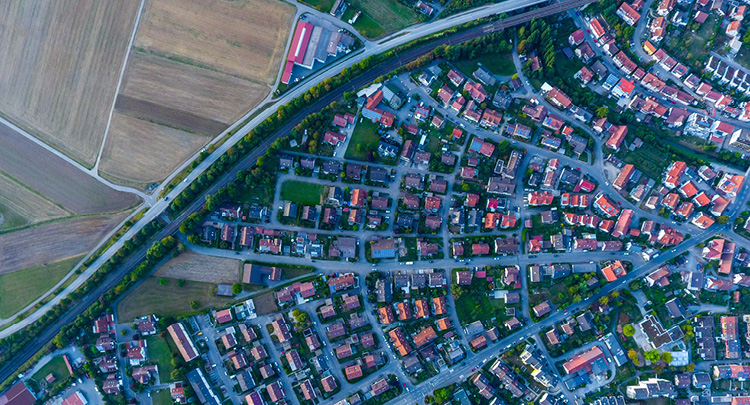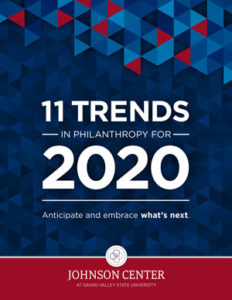Equity Mapping Tools Combine the Power of Data and Narrative Change


In this piece from our 11 Trends in Philanthropy for 2020 report, Kallie Bauer and Rachel Borashko take a closer look at this trend.
 In just the last decade, U.S. foundations have dispersed $3.4 billion in racial equity grants, with the Ford and W.K. Kellogg Foundations topping the list (Candid, n.d.). Over this same period, technological innovations and the amount of data that we create and collect have been accelerating rapidly. Experts estimate more than 150 zettabytes (150 trillion gigabytes) of data will need to be analyzed by 2025 (Kulkarni, 2019).
In just the last decade, U.S. foundations have dispersed $3.4 billion in racial equity grants, with the Ford and W.K. Kellogg Foundations topping the list (Candid, n.d.). Over this same period, technological innovations and the amount of data that we create and collect have been accelerating rapidly. Experts estimate more than 150 zettabytes (150 trillion gigabytes) of data will need to be analyzed by 2025 (Kulkarni, 2019).
With so much money and information in the mix — and so many lives and communities in the balance — philanthropy has an opportunity to better leverage the data we have to achieve the ends we seek.
The Social Innovation Exchange reminds us that with such a large quantity of data in need of analysis, there is a growing demand for practitioners to be skilled at collecting, interpreting, and using data (Junge, Schreiner, & Pulford, 2018). Not all nonprofit practitioners, however, will be data scientists on the side. There is a growing need for tools and systems that can help broader audiences make sense of large quantities of data for informed decision-making. One approach to addressing this issue is through equity mapping.
Members of the National Neighborhood Indicators Partnership (NNIP, 2014) define equity mapping as the use of “GIS technology to make the connection between so-called areas of opportunity — places where jobs are relatively plentiful and access to education, healthcare, and other amenities is close at hand — and communities with high concentrations of low-income and minority residents” (para. 1). Users of equity maps (or equity atlases) are able to obtain a clear picture of which assets exist within a community.
According to the U.S. Department of Housing and Urban Development (2014), the first equity atlas in the nation was the Pacific Northwest Regional Equity Atlas, produced for the Portland-Vancouver region in 2007. The second atlas appeared five years later, when Denver, Colo. released the Denver Regional Equity Atlas in 2012.
“Equity mapping is proving invaluable for helping local leaders make decisions about investment and development opportunities and target the impact of proposed projects.”
Today, equity atlases have cropped up around the country, some in the form of static maps and others as interactive, web-based mapping platforms. Equity atlases tend to focus on a specific region, such as the Bay Area Equity Atlas and the Metro Atlanta Equity Atlas. They also can focus on a specific topic, such as the Denver Regional Equity Atlas, the Los Angeles Index of Neighborhood Change, and the Transportation Equity Atlas in New York City.
While most equity atlases focus on smaller geographic regions, there are some equity mapping tools that focus on the entire nation. The Opportunity Atlas, produced by Harvard’s Opportunity Insights, focuses on economic indicators, while the National Equity Atlas from the University of Southern California’s Program for Environmental and Regional Equity (PERE) and PolicyLink focuses on equitable and sustainable community futures. These national equity atlases help us understand not only the differences within our own geographies of interest but also how these geographies compare to surrounding regions and the nation as a whole.
Equity mapping is proving invaluable for helping local leaders make decisions about investment and development opportunities and target the impact of proposed projects (e.g., expanding transit access, opening a community college satellite). To provide local leaders with the best information available, it is preferable to have datasets available at small geographic levels, like census tracts. Visualizing data for smaller geographic levels on a map can highlight which localities in a city should be given priority attention over others. For example, Denver’s use of an equity atlas helped investors identify sites near public transit for affordable housing and healthy food financing (Sadler, 2014).
“Asset maps, a type of equity map, can help highlight the strengths of all communities, including those that are often considered underprivileged or disadvantaged.”
Researchers, too, use equity mapping in their work. Ohio State University’s Kirwan Institute for the Study of Race and Ethnicity (2019) developed Child Opportunity Index maps in partnership with diversitydatakids.org. The Institute’s maps show the opportunity levels in metropolitan area census tracts, relative to other tracts in the area. Virginia Commonwealth University’s Center on Society and Health is also using equity maps for research purposes. Its maps show just how drastically life expectancy can differ even between neighborhoods in a single city. According to the Center (2016), “In some cases, life expectancy can differ by as much as 20 years in neighborhoods only about five miles apart from one another” (para. 1).
Equity maps are also helping communities flip the script for narrative change. Asset maps, a type of equity map, can help highlight the strengths of all communities, including those that are often considered underprivileged or disadvantaged. For example, HealthyCity.org, developed and maintained by the Advancement Project California, allows users to map assets, including arts and culture organizations, athletic fields/courts, farmers’ markets, public health organizations, and many others (Healthy City, n.d.). Philanthropic organizations can use asset maps to better understand communities and their strengths, rather than focusing only on disparities.
Philanthropy and technology are changing rapidly, and as more and more data become available, the need for accurate interpretations continues to grow. Combining the power of mapping tools with the ever-finer interpretations of data can help advance data-informed decision making at every level.


Candid. (n.d.). Racial equity. Retrieved from https://candid.org/explore-issues/racial-equity
Junge, J., Schreiner, K., & Pulford, L. (2018, May 31). The role of philanthropy in using data to address complex challenges: A global scan. Retrieved from https://socialinnovationexchange.org/sites/default/files/uploads/the_role_of_philanthropy_in_using_data_to_address_complex_challenges-_a_global_scan.pdf
Healthy City. (n.d.) Advancement Project California. Retrieved from https://www.healthycity.org
Kulkarni, R. (2019, February 7). Big data goes big. Forbes. Retrieved from https://www.forbes.com/sites/rkulkarni/2019/02/07/big-data-goes-big
National Neighborhood Indicators Partnership. (2014, April). Equity mapping and the geography of opportunity. Retrieved from https://www.neighborhoodindicators.org/activities/partner/equity-mapping-and-geography-opportunity
Ohio State University’s Kirwan Institute for the Study of Race and Ethnicity. (2019). Child opportunity maps. Retrieved from http://www.diversitydatakids.org/research-library/data-visualization/what-does-child-opportunity-look-your-metro
Sadler, B. (2014, April 29). Putting equity on the map: Measuring access to opportunity with an equity atlas [Blog post]. Retrieved from https://www.livingcities.org/blog/540-putting-equity-on-the-map-measuring-access-to-opportunity-with-an-equity-atlas
U.S. Department of Housing and Urban Development. (2014, April 21). Equity mapping and the geography of opportunity. PD&R Edge. Retrieved from https://www.huduser.gov/portal/pdredge/pdr_edge_featd_article_042114.html
Virginia Commonwealth University Center on Society and Health. (2016, September 26). Mapping life expectancy. Retrieved from https://societyhealth.vcu.edu/work/the-projects/mapping-life-expectancy.html